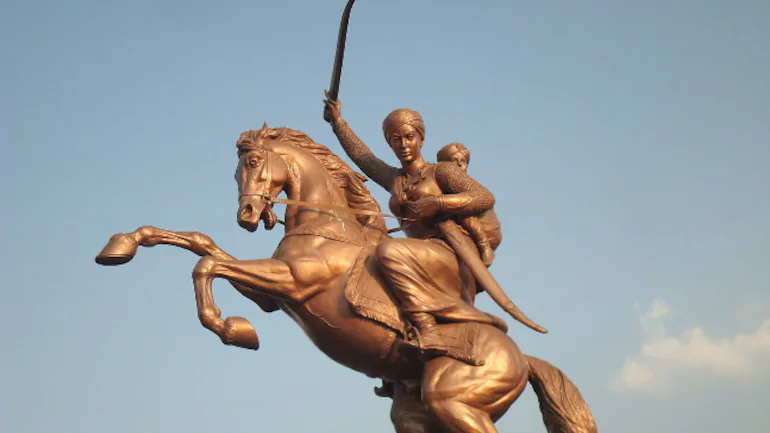Focus: GS I- Modern Indian history
Why in News?
PM paid tribute to Rani Lakshmibai on her Jayanti.
About Rani Lakshmibai

- The Lakshmibai, the Rani of Jhansi, was an Indian queen of the Maratha princely state of Jhansi in North India currently present in Jhansi district in Uttar Pradesh, India.
- She was one of the leading figures of the Indian Rebellion of 1857 and became a symbol of resistance to the British Raj for Indian nationalists.
- When Growing up with Nana Sahib and Tatya Tope, she got training in martial arts, sword fighting and horse riding and became proficient in them. She was more independent than other girls of her age, due to her unconventional upbringing.
- The Rani Lakshmibai was one of the brave warriors of India’s struggle for Independence.
- In 1853, when the Maharaja of Jhansi died, the East India Company took advantage of the situation and applied the Doctrine of Lapse to annex Jhansi.
- The Lakshmibai fought bravely against the British and gave a tough fight to Sir Hugh Rose so as to save her empire from annexation. She died fighting on the battlefield on June 17, 1858.
- When the Indian National Army started its first female unit (in 1943), it was named after the valiant queen of Jhansi.
About Doctrine of Lapse

- It was an annexation policy followed widely by Lord Dalhousie when he was India’s Governor-General from 1848 to 1856.
- According to this, any princely state that was under the direct or indirect control of the East India Company where the ruler did not have a legal male heir would be annexed by the company.
- As per this, any adopted son of the Indian ruler could not be proclaimed as heir to the kingdom.
By applying the doctrine of lapse, Dalhousie annexed the States of:
- Satara (1848 A.D.),
- Jaitpur, and Sambalpur (1849 A.D.),
- Baghat (1850 A.D.),
- Udaipur (1852 A.D.),
- Jhansi (1853 A.D.), and
- Nagpur (1854 A.D.)




